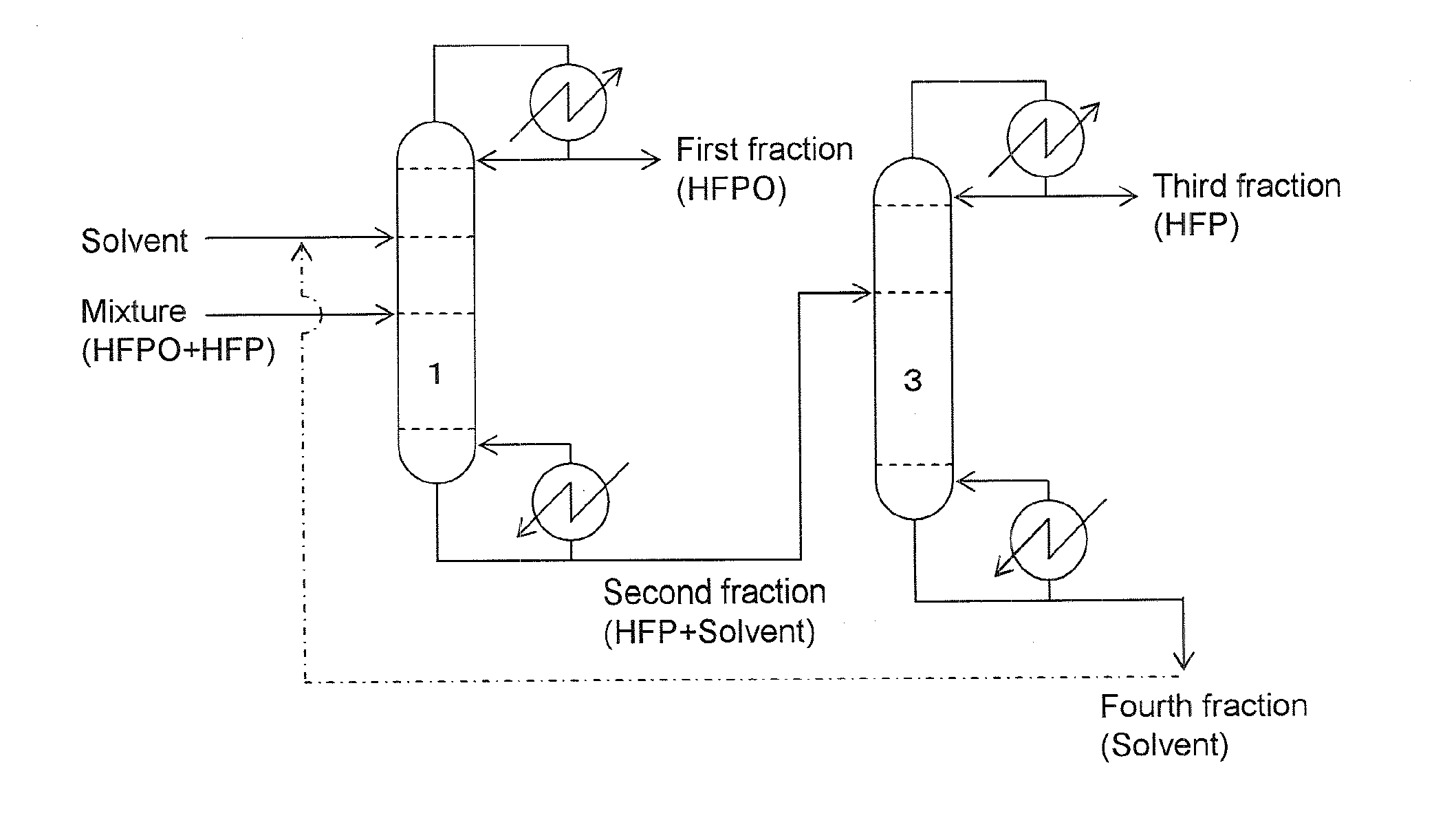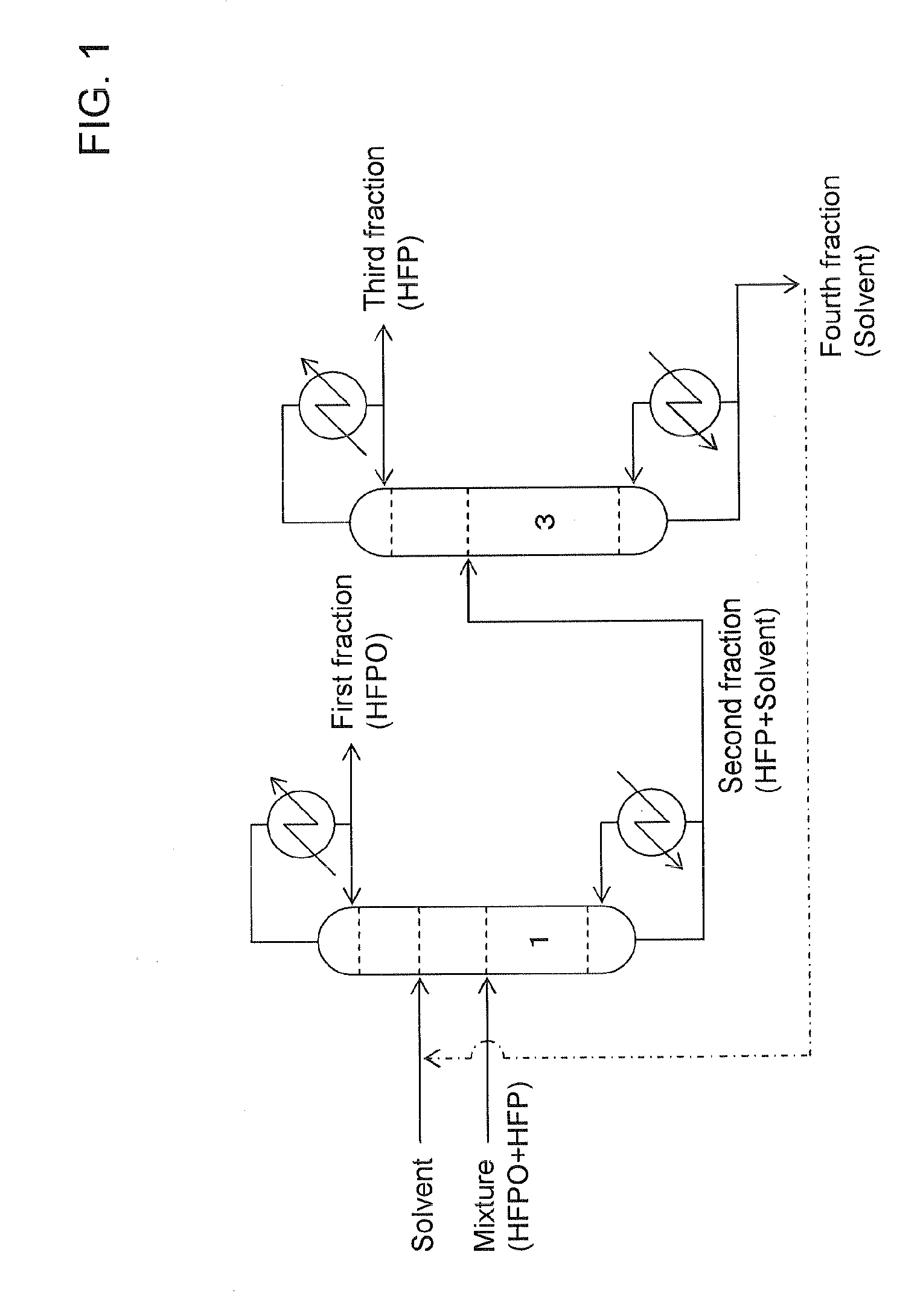Method for separating hexafluoropropylene oxide from hexafluoropropylene
a technology of hexafluoropropylene and hexafluoropropylene, which is applied in the field of separating hexafluoropropylene oxide from hexafluoropropylene, can solve the problems of insufficient increase of relative volatility and difficulty in distillation, and achieve the effect of reducing the burden on the environmen
- Summary
- Abstract
- Description
- Claims
- Application Information
AI Technical Summary
Benefits of technology
Problems solved by technology
Method used
Image
Examples
examples
[0059]With respect to cases using various solvents and no solvent, a relative volatility of HFPO to HFP was determined.
1) HFC-365mfc
[0060]In an Othmer-type vapor-liquid equilibrium measuring apparatus, 28 g of HFPO, 25 g of HFP and 495 g of HFC-365mfc (CH3CF2CH2CF3) as a solvent were respectively charged. When a liquid phase temperature was adjusted so that the pressure becomes 0.5 MPaG (gauge pressure), a liquid phase temperature was 71.8° C. After a lapse of 3 hours or more under the above conditions, a condensate liquid of the vapor phase portion and a liquid of the liquid phase portion were sampled, and these were respectively measured by a gas chromatograph. The molar ratio of HFP and HFPO was measured from the obtained data and the relative volatility of HFPO to HFP was determined as 2.67. These conditions and results are shown in Table 1.
2) 1-Bromopropane
[0061]The same procedures as in the case of the above (1) were carried out, except that the conditions...
example
[0068]A case conducting the present invention in accordance with the Embodiment 1 described in the above with reference to FIG. 1 was simulated.
[0069]Extractive distillation was presumed to be carried out by continuously supplying a mixture of HFPO and HFP (in a molar ratio of 1:1) from the lower part of the concentration section at a rate of 106 g per hour to an extractive distillation column equipped with a solvent recovery section with about 7 plates, a concentration section with about 15 plates and a recovery section with 10 plates; continuously supplying HFC-365mfc as a solvent from the lower part of the solvent recovery section at a rate of 595 g per hour; continuously discharging a first fraction at a rate of 56 g per hour from the column top side while controlling a reflux ratio at 16; and continuously discharging a second fraction at a rate of 645 g per hour from the column bottom side. During the operation, the pressure in the extractive distillation column (in the system)...
PUM
| Property | Measurement | Unit |
|---|---|---|
| Pressure | aaaaa | aaaaa |
| Boiling point | aaaaa | aaaaa |
| Boiling point | aaaaa | aaaaa |
Abstract
Description
Claims
Application Information
 Login to View More
Login to View More - R&D
- Intellectual Property
- Life Sciences
- Materials
- Tech Scout
- Unparalleled Data Quality
- Higher Quality Content
- 60% Fewer Hallucinations
Browse by: Latest US Patents, China's latest patents, Technical Efficacy Thesaurus, Application Domain, Technology Topic, Popular Technical Reports.
© 2025 PatSnap. All rights reserved.Legal|Privacy policy|Modern Slavery Act Transparency Statement|Sitemap|About US| Contact US: help@patsnap.com


